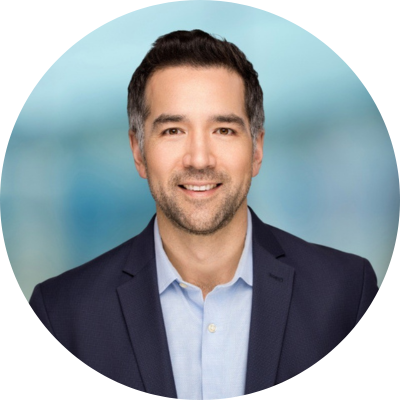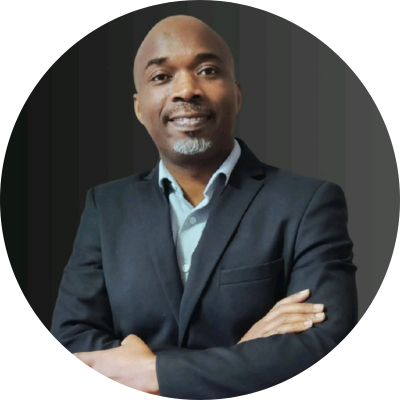“Active male allies can be the harbingers for change in an industry where women, despite representing a large portion of the global health workforce, are significantly underrepresented in decision-making roles. This incongruity is not just a matter of fairness; it is a systemic failure that hampers the effectiveness and inclusivity of health services.” – Liberty Kituu for WomenLift Health, “Role Of Male Allies in Forging Gender Equity in Health Leadership,” Feb 2024
Male allies are men who work with women to promote gender equality and gender equity both in their personal lives and in the workplace. They play a vital role in addressing unconscious biases, challenging harmful stereotypes, and advocating for policies that empower women to lead. Equally critical is the allyship among women, where mentorship, sponsorship, and collective action create networks of support and amplify women’s voices. Allyship is not merely a supportive role; it is a transformational approach to leadership that ensures diverse voices and perspectives are represented.
The World Economic Forum’s Global Gender Gap Report 2024 shows that in global workforce representation and leadership, women are close to occupying 46% of entry-level positions, but they hold less than 25% of C-suite roles. LinkedIn data shows that women’s workforce representation remains below men’s across nearly every industry and economy, with women accounting for 42% of the global workforce and 31.7% of senior leaders.
In the global health field, women comprise the single most under-utilized leadership pool, making up only 25% of leadership despite being 70% of the workforce. Yet research shows that organizations with a more diverse workforce work smarter and drive greater innovations[1]. Evidence also indicates that allyship is a cornerstone for creating more inclusive and equitable leadership structures in global health. When organizations deliberately engage men in gender inclusion programs, 96% of organizations experience progress, compared to just 30% that do not engage men in similar initiatives[2].
|
Male allies play a crucial role in progressing toward gender parity by:
|
Five women leaders from the North America, India, and East Africa cohorts of the WomenLift Health Leadership Journey engaged in conversations with their male colleagues about the challenges of being a male ally in the workplace, strategies for cultivating male allyship, and ways to ensure gender-equitable leadership practices in the global health sector.
In Part 2 of this two-part series, we explore what our colleagues had to say about the challenges of male allyship, what institutions can do to cultivate male allyship, and what they hope to see in the future.
The Challenges of Male Allyship
For male allies, it’s not enough to simply mentor and sponsor women. They must help address the barriers to women seeking that kind of support — and confront other men who don’t support allyship.
Q: What are some reasons you think women hesitate to approach men for mentorship and sponsorship?
 John Cape, Chief Program Officer, Global Health Corps (North America): I imagine there are myriad reasons, but the question I think might be more important is: How can men make it easier for women to approach them for mentorship and support? Or better yet, how can women and men form more mutually beneficial relationships? The strongest relationships I have with women include two-way mentorship and championship. We support each other because we believe in each other’s values and potential. We each benefit from our differences in perspective, expertise, information, and resources.
John Cape, Chief Program Officer, Global Health Corps (North America): I imagine there are myriad reasons, but the question I think might be more important is: How can men make it easier for women to approach them for mentorship and support? Or better yet, how can women and men form more mutually beneficial relationships? The strongest relationships I have with women include two-way mentorship and championship. We support each other because we believe in each other’s values and potential. We each benefit from our differences in perspective, expertise, information, and resources.
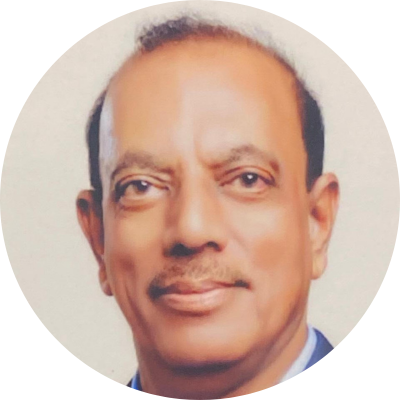 Srinivas Tadepally, CFO, Bharat Biotech International Limited (India): The hesitation of women to approach men is more of a social reason. Mentorship [requires the] dedication of time of male colleagues. Sometimes, a mentorship can be wrongly interpreted as a romantic relationship [in India]. This is a social issue that requires more acceptance of this type of professional relationship. This depends on social surroundings, area, country, and place of work. This societal bias can be reduced by having a higher ratio of men and women at the workplace.
Srinivas Tadepally, CFO, Bharat Biotech International Limited (India): The hesitation of women to approach men is more of a social reason. Mentorship [requires the] dedication of time of male colleagues. Sometimes, a mentorship can be wrongly interpreted as a romantic relationship [in India]. This is a social issue that requires more acceptance of this type of professional relationship. This depends on social surroundings, area, country, and place of work. This societal bias can be reduced by having a higher ratio of men and women at the workplace.
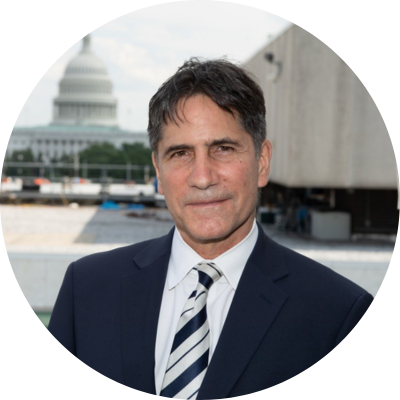 Chris Collins, President & CEO, Friends of the Global Fight Against AIDS, TB and Malaria (North America): Unfortunately, many times, women are overlooked simply because they are women. This lack of recognition is a significant issue that we all need to address. It’s obviously wrong and something we must actively work against. Although I am not a woman, I can imagine that many women feel hesitant because they are unsure of the reception they will receive. Our society often holds the belief that women shouldn’t be as ambitious, outspoken, or opinionated as men, which is a major societal problem. This mindset can lead to reluctance among women to assert themselves due to concerns about how they will be perceived. We often see this dynamic in politics, where ambitious and assertive women are negatively labeled, while men exhibiting the same traits are praised for their competence and leadership. This double standard undoubtedly affects women, making them cautious about putting themselves forward. We need to work towards creating an environment where women feel confident and supported in expressing their ambitions and opinions, free from biased judgments.
Chris Collins, President & CEO, Friends of the Global Fight Against AIDS, TB and Malaria (North America): Unfortunately, many times, women are overlooked simply because they are women. This lack of recognition is a significant issue that we all need to address. It’s obviously wrong and something we must actively work against. Although I am not a woman, I can imagine that many women feel hesitant because they are unsure of the reception they will receive. Our society often holds the belief that women shouldn’t be as ambitious, outspoken, or opinionated as men, which is a major societal problem. This mindset can lead to reluctance among women to assert themselves due to concerns about how they will be perceived. We often see this dynamic in politics, where ambitious and assertive women are negatively labeled, while men exhibiting the same traits are praised for their competence and leadership. This double standard undoubtedly affects women, making them cautious about putting themselves forward. We need to work towards creating an environment where women feel confident and supported in expressing their ambitions and opinions, free from biased judgments.

Sreenivasan Kallam, ex-supervisor and a public health professional with expertise in MEAL (India): Mentorship in the development sector is often treated casually, lacking structured procedures or institutional requirements. To address this, mentorship should be a formal, structured, and compulsory activity within organizations, with performance evaluations of leadership including mentorship scores. Most women in organizations do not make formal requests for mentorship, leading leaders to take on the role of protecting and safeguarding women. Teams often view managers as predators focused on extracting work from them rather than as sources of knowledge, learning, and mentorship.
Q: How do you address other men who are not allies and in fact can actively work against women (derail/harass/etc.)? Do you feel men get pigeonholed/labeled as “the man who is always advocating for women” or see any other risk or penalty associated with allyship?
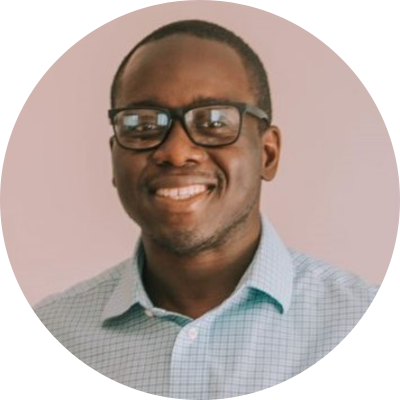 Emmanuel Lamptey, Senior Project Director, IREX (North America): There are two general strategies I have employed. First, I actively disassociate myself from other men who I think are consciously working against women for whatever reasons. In some specific cases, I work around them (particularly when they are either at a similar level or below me). When I sense there is unconscious bias, I will diplomatically point out how their actions or decisions may adversely affect female colleagues/staff and suggest considering a different approach. For example, once, a colleague suggested giving an opportunity to a male team member to travel for a one-week conference because they thought that in offering it to his female team member, she would now have to worry about childcare options for that week, and [they] didn’t want to overburden her. The person thought they were being helpful by not giving their colleague [the] headache [of] finding care for her young children— [and not giving that colleague this opportunity]. [My suggestion was that because] she had worked on the same presentation, we [should] give her the right of first refusal.
Emmanuel Lamptey, Senior Project Director, IREX (North America): There are two general strategies I have employed. First, I actively disassociate myself from other men who I think are consciously working against women for whatever reasons. In some specific cases, I work around them (particularly when they are either at a similar level or below me). When I sense there is unconscious bias, I will diplomatically point out how their actions or decisions may adversely affect female colleagues/staff and suggest considering a different approach. For example, once, a colleague suggested giving an opportunity to a male team member to travel for a one-week conference because they thought that in offering it to his female team member, she would now have to worry about childcare options for that week, and [they] didn’t want to overburden her. The person thought they were being helpful by not giving their colleague [the] headache [of] finding care for her young children— [and not giving that colleague this opportunity]. [My suggestion was that because] she had worked on the same presentation, we [should] give her the right of first refusal.
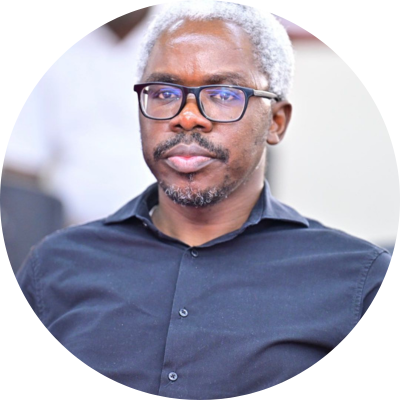 Prof. Lukoye Atwoli, Dean, Aga Khan University Medical College (East Africa): I am privileged to occupy a space where I have certain freedoms allowing me to speak freely advocating for women without ulterior motives being inferred. So how do I address other men?
Prof. Lukoye Atwoli, Dean, Aga Khan University Medical College (East Africa): I am privileged to occupy a space where I have certain freedoms allowing me to speak freely advocating for women without ulterior motives being inferred. So how do I address other men?
A) Show them how the organization will benefit from diversity.
B) Express myself, saying what I think about advocating for women as I sit in a position that men will listen to.
C) Identify women who are assets and present them as counterarguments [to any opposition].
D) Present capable women that absolutely discount the “risk” of having women on board.
E) Do not confront the men directly, as this only makes them defensive — and then they agree with you in public but continue to sabotage the women in the background.
F) I have done interviews where [the] top candidate [is] a man and second a woman. I have asked that we then make the woman the deputy or we hire the woman to enhance diversity; if the hiring team says she is inexperienced, then I ask that we help her grow in the role.
 Rushabh Hemani, WASH Specialist, UNICEF Rajasthan (India): During my two-decades long professional association with UNICEF in India in progressive responsibilities, I have not come across any situation [with] other men not coming across as allies and working against women. I would credit UNICEF as an organization to provide equal work opportunities and inclusive policies as well as a focus on gender transformative work initiated in a structured way since 2018. By and large in the development sector and particularly in UNICEF (UN system), based on my experience so far, I don’t feel men get labeled as “the man who is always advocating for women.” However, the same may not be true for other sectors, particularly the corporate world, which is extremely competitive and demanding.
Rushabh Hemani, WASH Specialist, UNICEF Rajasthan (India): During my two-decades long professional association with UNICEF in India in progressive responsibilities, I have not come across any situation [with] other men not coming across as allies and working against women. I would credit UNICEF as an organization to provide equal work opportunities and inclusive policies as well as a focus on gender transformative work initiated in a structured way since 2018. By and large in the development sector and particularly in UNICEF (UN system), based on my experience so far, I don’t feel men get labeled as “the man who is always advocating for women.” However, the same may not be true for other sectors, particularly the corporate world, which is extremely competitive and demanding.
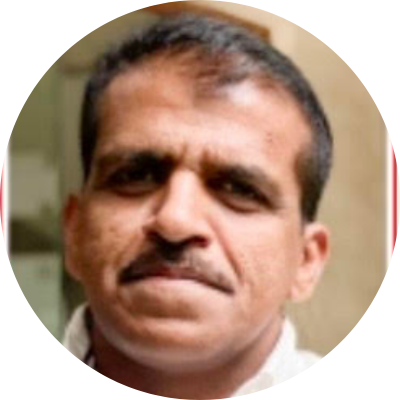 M K Padmakumar, Chief Operating Officer at IPE Global (India): I personally have not come across such situations, [possibly] because of the sector I am working in. It is not about whether men who are advocating for women will be labeled but will they be able to influence those who do not think it is important. Many of those who are not pro to women leadership will work silently to sabotage such a situation: They will make a business case for why men are more suited.
M K Padmakumar, Chief Operating Officer at IPE Global (India): I personally have not come across such situations, [possibly] because of the sector I am working in. It is not about whether men who are advocating for women will be labeled but will they be able to influence those who do not think it is important. Many of those who are not pro to women leadership will work silently to sabotage such a situation: They will make a business case for why men are more suited.
Institutional Changes to Encourage Male Allyship
The efforts of individual male allies are amplified when organizations develop strategies and policies that support women’s leadership and encourage more men to become allies.
Q: What strategies can organizations take to cultivate male allyship?
 Dr. Simon Kigondu, President, Kenya Medical Association, Consultant Obstetrician and Gynecologist (East Africa): Organizations can encourage active participation of women in leadership. They can also amplify positive contributions of women within their organizations and documented policies that ensure gender equity in all aspects of work.
Dr. Simon Kigondu, President, Kenya Medical Association, Consultant Obstetrician and Gynecologist (East Africa): Organizations can encourage active participation of women in leadership. They can also amplify positive contributions of women within their organizations and documented policies that ensure gender equity in all aspects of work.
 Chris Collins, President & CEO, Friends of the Global Fight Against AIDS, TB and Malaria (North America): I would like to see more visible programs that promote women in leadership, particularly ones that are accessible without fees. It’s important to create more opportunities for leadership retreats that include both women and men, allowing them to exchange ideas and discuss how to create meaningful change. This conversation needs to be more prominent, because sexism, which affects more than half the world’s population, is often the least discussed among social inequities. We must address all the “isms” and inequities that hinder women’s progress as leaders. While other forms of discrimination are equally valid and important [to address], sexism remains a significant barrier. As a society, we need to confront double standards regarding women’s voices, leadership, and pay. Organizations should do much more to create an enabling environment for women leaders. Incorporating the recognition and promotion of women as leaders into our understanding of good management and training is essential. We need to keep raising this issue. Employers should integrate this focus into their hiring practices, staff development, and leadership opportunities. It’s crucial for employers to regularly evaluate their performance concerning women in leadership, staff composition, and the opportunities they provide for women. Employers must continuously ask themselves: How are we doing in terms of women in leadership and women on staff? What opportunities are we giving to women? Where are the deficits, and what actions are we taking to address them? This is every employer’s responsibility.
Chris Collins, President & CEO, Friends of the Global Fight Against AIDS, TB and Malaria (North America): I would like to see more visible programs that promote women in leadership, particularly ones that are accessible without fees. It’s important to create more opportunities for leadership retreats that include both women and men, allowing them to exchange ideas and discuss how to create meaningful change. This conversation needs to be more prominent, because sexism, which affects more than half the world’s population, is often the least discussed among social inequities. We must address all the “isms” and inequities that hinder women’s progress as leaders. While other forms of discrimination are equally valid and important [to address], sexism remains a significant barrier. As a society, we need to confront double standards regarding women’s voices, leadership, and pay. Organizations should do much more to create an enabling environment for women leaders. Incorporating the recognition and promotion of women as leaders into our understanding of good management and training is essential. We need to keep raising this issue. Employers should integrate this focus into their hiring practices, staff development, and leadership opportunities. It’s crucial for employers to regularly evaluate their performance concerning women in leadership, staff composition, and the opportunities they provide for women. Employers must continuously ask themselves: How are we doing in terms of women in leadership and women on staff? What opportunities are we giving to women? Where are the deficits, and what actions are we taking to address them? This is every employer’s responsibility.
Q: Would you suggest any institutional policies that ensure gender equity in hiring, salary, promotions etc., so men do not get to misuse their power by virtue of biased policy environment?
 M K Padmakumar, Chief Operating Officer at IPE Global (India): I think we now have a policy environment that is gender neutral for hiring, salary, and promotions. The key is to change the mindset of those who are hiring and deciding on promotions. There must be a fiscal incentive for businesses to hire more and more women. Why doesn’t the government introduce a 1 or 2% tax rebate on businesses with more than 50% women leadership or women employees? Also, businesses must have targeted leadership development programs for women employees to help them navigate through office politics, interviews, representation, etc.
M K Padmakumar, Chief Operating Officer at IPE Global (India): I think we now have a policy environment that is gender neutral for hiring, salary, and promotions. The key is to change the mindset of those who are hiring and deciding on promotions. There must be a fiscal incentive for businesses to hire more and more women. Why doesn’t the government introduce a 1 or 2% tax rebate on businesses with more than 50% women leadership or women employees? Also, businesses must have targeted leadership development programs for women employees to help them navigate through office politics, interviews, representation, etc.

Rushabh Hemani, WASH Specialist, UNICEF Rajasthan (India): UNICEF has a very strong gender policy, which is reviewed and strengthened depending on the emerging context. There have been significant changes to have diversity and inclusion and also looking at gender beyond binary classification. All staff and extended team, including consultants and partners, have been trained on key aspects of gender mainstreaming and moving from gender blind to gender sensitive, responsive and transformative in a phased manner.
Q: Research shows that mid-career men might view leadership advancement as a win-lose scenario. How can we make relationships between men and women at similar career stages more collaborative and solidarity driven? (e.g., men feel in competition with women for limited leadership positions)

Sreenivasan Kallam, ex-supervisor and a public health professional with expertise in MEAL (India):
Work culture in India has to change for true gender equality to be achieved. Fixed working hours need to be enforced. Due to the culture of unlimited work hours, men tend to clock in more hours compared to women. Quality of work is not a key measurement parameter in most workplaces. Women often deliver better quality outputs in fewer hours compared to men. However, since men have the luxury of staying back after designated working hours, they are often perceived as more hardworking and tend to gain leadership positions earlier than women. Human Resource teams need to be educated and trained to measure the quality of work, ensuring that merit, not just time spent, is the basis for advancement.
Looking into the Future: What Does Equitable Leadership in Health Look Like?
 Rabih Torbay, CEO, Project HOPE (North America): We all need to be better allies. I am still learning how to be a better one each day. No playbook [or] manual is given to any leader on how to be a great ally, but we should all strive to be better allies, learn from our experiences, and keep pushing forward! I believe that mentorship plays a critical role in being a better ally, and this is a tool that is really undervalued and under-utilized by many leaders!
Rabih Torbay, CEO, Project HOPE (North America): We all need to be better allies. I am still learning how to be a better one each day. No playbook [or] manual is given to any leader on how to be a great ally, but we should all strive to be better allies, learn from our experiences, and keep pushing forward! I believe that mentorship plays a critical role in being a better ally, and this is a tool that is really undervalued and under-utilized by many leaders!
Sometimes leaders don’t want to challenge the status quo: If it is not broken, don’t fix it. This is wrong. Just because we don’t see the “break” doesn’t mean it isn’t broken. Not capitalizing on everyone’s potential and creating opportunities is an indication of a broken system. We need to challenge the status quo and rattle some cages. We need to challenge organizational norms and practices that could hinder women’s progress, even if that makes men uncomfortable. We need to use our professional networks and expose women to opportunities that can support them in ascending to leadership positions, even if it is with a different organization. Finally, we need to be vocal and loud [about being better allies]!
 Chris Collins, President & CEO, Friends of the Global Fight Against AIDS, TB and Malaria (North America): I believe a better future is one where men and women lead together. Diversity in all its forms is essential, and having a balance of men and women in leadership roles is crucial. This isn’t about one kind of person being better than another: It’s about fostering diversity and equality and bringing different experiences to the table, especially in fields like global health. Women are vital health care partners, both as recipients and providers, making their presence in leadership indispensable. From the boardroom to the executive office [to the ranks of] community health care workers, women must hold leadership positions at every level. This will ensure a more effective and equitable approach to leadership in global health. In the United States, we are making progress, but there is still much work to be done. HR offices must remind all employees to respect women as leaders and value their opinions. Leaders and HR departments must consistently emphasize messages of equity and inclusion, particularly for women and communities of color. Globally, many communities face even more severe challenges, where women are often treated terribly. We need changes in laws, policies, and cultural attitudes to address these issues. In conclusion, more women in leadership roles will lead to a more just and effective global health system. This is my opinion, and it’s a crucial step towards a better future.
Chris Collins, President & CEO, Friends of the Global Fight Against AIDS, TB and Malaria (North America): I believe a better future is one where men and women lead together. Diversity in all its forms is essential, and having a balance of men and women in leadership roles is crucial. This isn’t about one kind of person being better than another: It’s about fostering diversity and equality and bringing different experiences to the table, especially in fields like global health. Women are vital health care partners, both as recipients and providers, making their presence in leadership indispensable. From the boardroom to the executive office [to the ranks of] community health care workers, women must hold leadership positions at every level. This will ensure a more effective and equitable approach to leadership in global health. In the United States, we are making progress, but there is still much work to be done. HR offices must remind all employees to respect women as leaders and value their opinions. Leaders and HR departments must consistently emphasize messages of equity and inclusion, particularly for women and communities of color. Globally, many communities face even more severe challenges, where women are often treated terribly. We need changes in laws, policies, and cultural attitudes to address these issues. In conclusion, more women in leadership roles will lead to a more just and effective global health system. This is my opinion, and it’s a crucial step towards a better future.
 Prof. Lukoye Atwoli, Dean, Aga Khan University Medical College (East Africa): Organizations should cultivate a culture that recognizes and supports collaboration in diverse teams so that men don’t see women as competing for scarce positions but as collaborators working towards a common organization goal. The emphasis should be that diverse teams are suitable for the organization [and that] men and women achieve more together than in homogeneous groups or teams. A regular review of hiring and [employment] practices should be common to ensure [there is] no systematic discrimination against women in the workplace.
Prof. Lukoye Atwoli, Dean, Aga Khan University Medical College (East Africa): Organizations should cultivate a culture that recognizes and supports collaboration in diverse teams so that men don’t see women as competing for scarce positions but as collaborators working towards a common organization goal. The emphasis should be that diverse teams are suitable for the organization [and that] men and women achieve more together than in homogeneous groups or teams. A regular review of hiring and [employment] practices should be common to ensure [there is] no systematic discrimination against women in the workplace.

John Cape, Chief Program Officer, Global Health Corps (North America): I think we can do a better job aligning on shared values and vision. Gender equity isn’t [only] a women’s issue. Misogyny has an insidious and deleterious impact on men’s health, spirituality, and wellbeing, too. I think we — men, especially — can lose track of that. It’s important to acknowledge and articulate our vision for a world where we can all flourish, which can’t be realized without gender equity.

Sreenivasan Kallam, ex-supervisor and a public health professional with expertise in MEAL (India): I have been fortunate to work in organizations where men and women lead together. In such environments, the difference in leadership and their roles was not so apparent. Men tend to do a lot of work-related travel compared to women, often gaining more knowledge of ground conditions. As a result, decisions made by men can sometimes seem more realistic compared to those made by women, who may not visit the field as frequently. However, I have also seen women leaders who are well connected to the ground and excel in decision-making. To see a new future, organizations need policy and compliance checks to support equal opportunities and promote a culture of shared leadership and mutual respect.
A Ripple Effect
From these reflections, there is a shared belief among these male allies that women count, and men who are truly passionate about being allies need to be allies all the time, particularly in moments when decisions are being made. A key part of male allyship is integrating it as part of how men see the world so they use their respective platforms to drive change. A famous proverb states, “small drops make an ocean.” If more men work toward cultivating an attitude of allyship, this will create a ripple effect that drives true commitment toward gender equity in global health leadership.
Appreciation to the following WomenLift Health members for collating this piece:
- Chioma Okafor (NA 2023)
- Lanice C. Williams (NA 2022)
- Dr. Shubha Nagesh (India 2022)
- Priyanka Sharma (India 2023)
- Brunda Ganneru (India 2023)
- Dr. Jacqueline Kitulu (EA 2022)
- Samara Andrade (North America Director, WomenLift Health)
- Stephany Fong (North America Communications Manager, WomenLift Health)
- Angel Katusya (Media Relations Manager, Cross Regional, WomenLift Health)
Appreciation to the men who contributed their opinions and thoughts to this piece:
- Prof. Lukoye Atwoli, Dean, Aga Khan University Medical College, East Africa
- Dr. Simon Kigondu, President, Kenya Medical Association, Consultant Obstetrician and Gynecologist
- John Cape, Chief Program Officer, Global Health Corps
- Chris Collins, President & CEO, Friends of the Global Fight Against AIDS, TB and Malaria
- Rabih Torbay, President & CEO, Project HOPE
- Emmanuel Lamptey, Senior Project Director, IREX
- Dr. Anant Bhan, Lead, Sangath Bhopal India
- Srinivas Tadepally, CFO, Bharat Biotech International Limited, India
- Rushabh Hemani, WASH Specialist, UNICEF Rajasthan
- M K Padmakumar, Chief Operating Officer at IPE Global
- Sreenivasan Kallam, ex-supervisor and a public health professional with expertise in MEAL
⎯⎯⎯⎯⎯⎯⎯⎯⎯⎯⎯⎯⎯⎯⎯⎯
[1] https://hbr.org/2016/11/why-diverse-teams-are-smarter
[2] https://www.bcg.com/en-us/publications/2017/people-organization-behavior-culture-five-ways-men-improve-gender-diversity-work
Each year in the WomenLift Health Leadership Journey, cohort members male allies for a panel on allyship. Launched in 2022 at the request of cohort members, this panel underscores the fact that gender equality cannot be achieved without the partnership of our male counterparts.
In the 2024 North America Leadership Journey, we featured two esteemed panels of male allies:
Male Allies JourneyPLUS Cohort A:
|
|
|
|
|
Male Allies JourneyPLUS Cohort B:
|
|
|
|
|
|
See related WomenLift Health articles:
Male Allyship in Global Health Leadership: Cross-Cultural Perspectives on Gender Equity – Q&A Part 1
Allyship Matters: How Men Can Help Accelerate Gender Equality in Health
The Critical Role of Male Allies in Forging Gender Equity in Health Leadership
Role Of Male Allies In Forging Gender Equity In Health Leadership
WomenLift Health Global Conference: Panel on Male Allyship
Video: What Does Allyship Mean To You? – #WLHGC2024
Take 5: Dr. Michael Adekunle on Male Allyship
#WLHGC2024 Panel on Male Allyship: What do men have to do with it?
Overcoming Biases: Building Inclusivity in Global Health Innovations ft. Dr. Muthoni Ntonjira
Related external articles:

